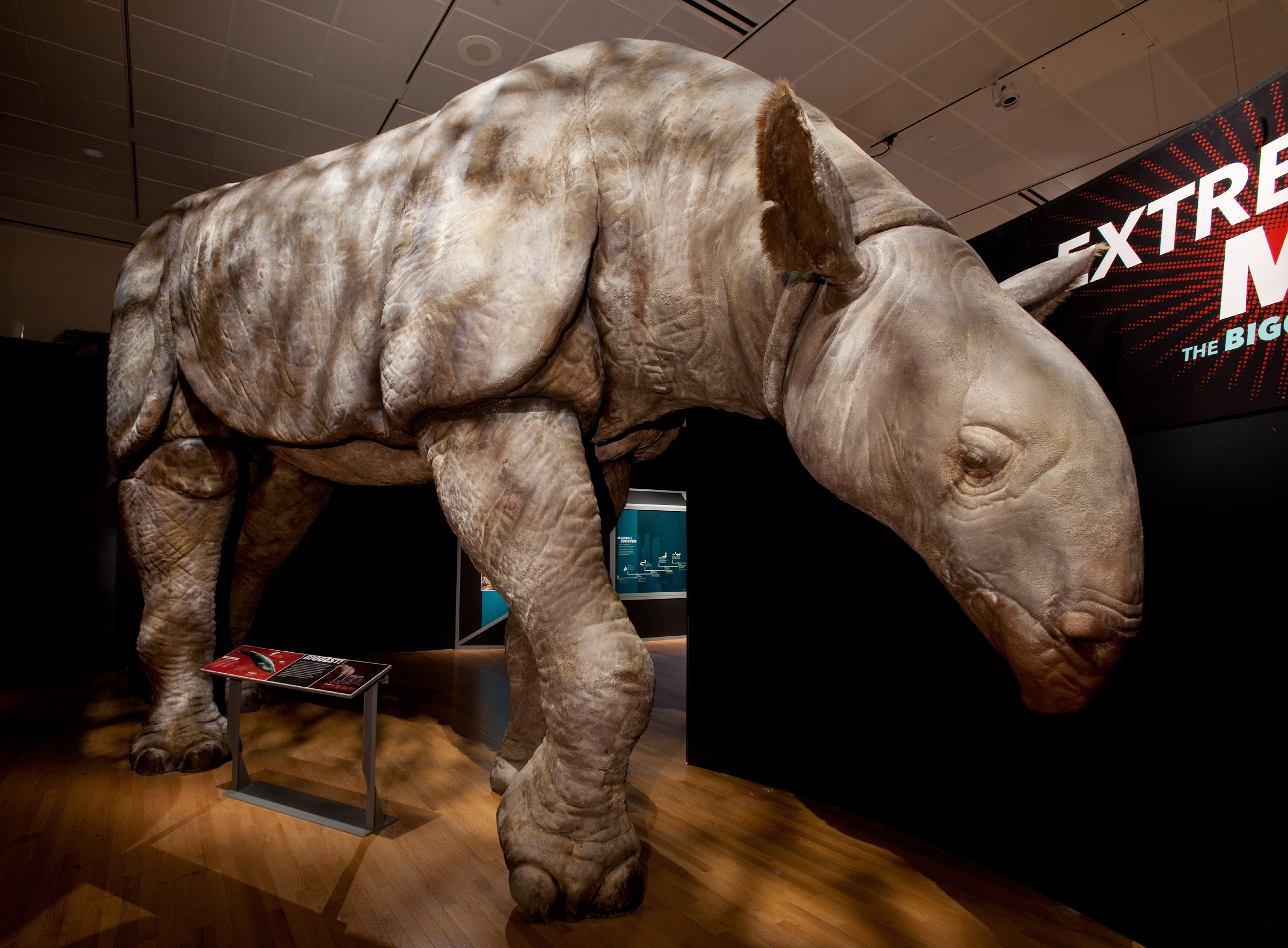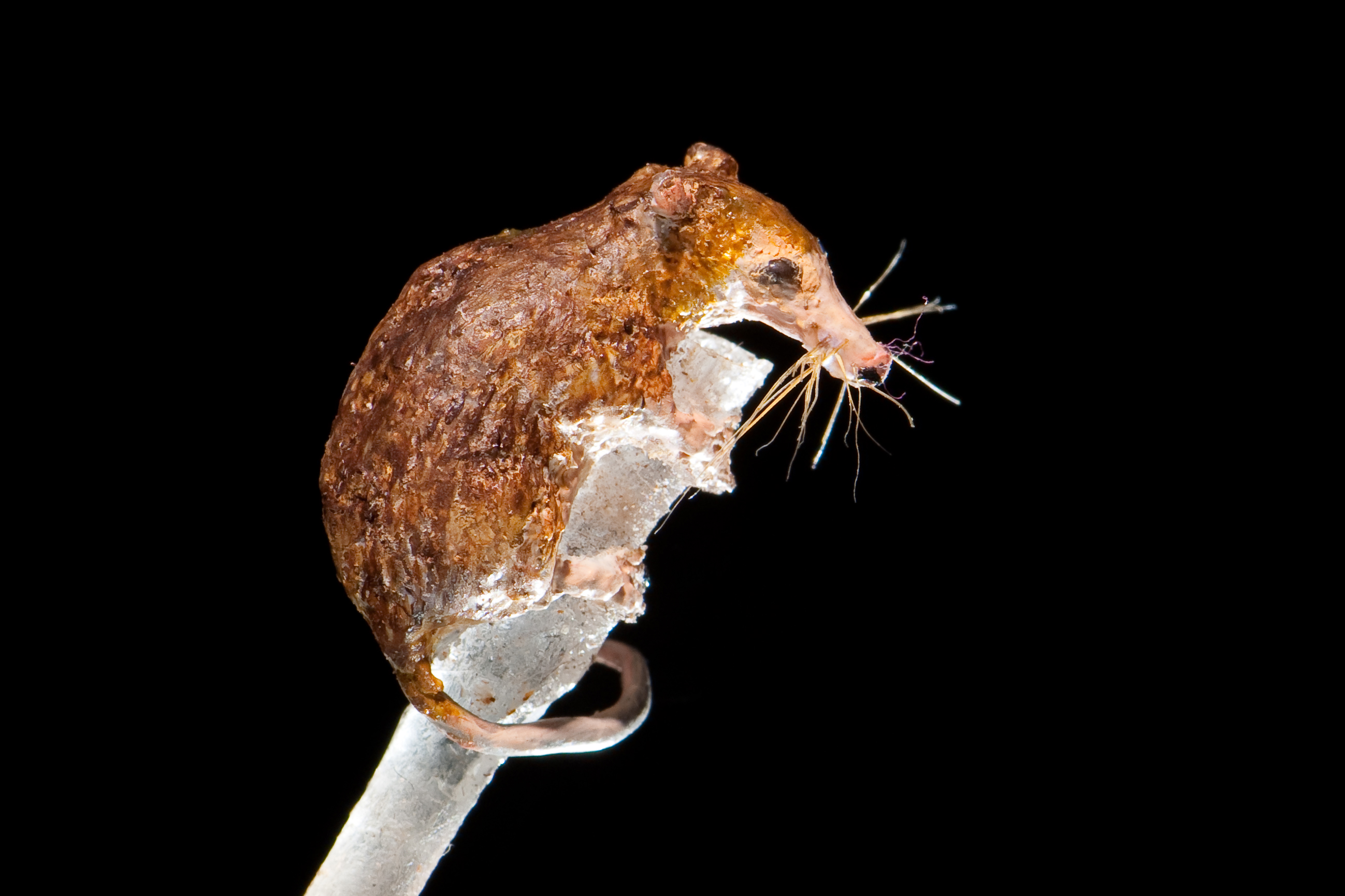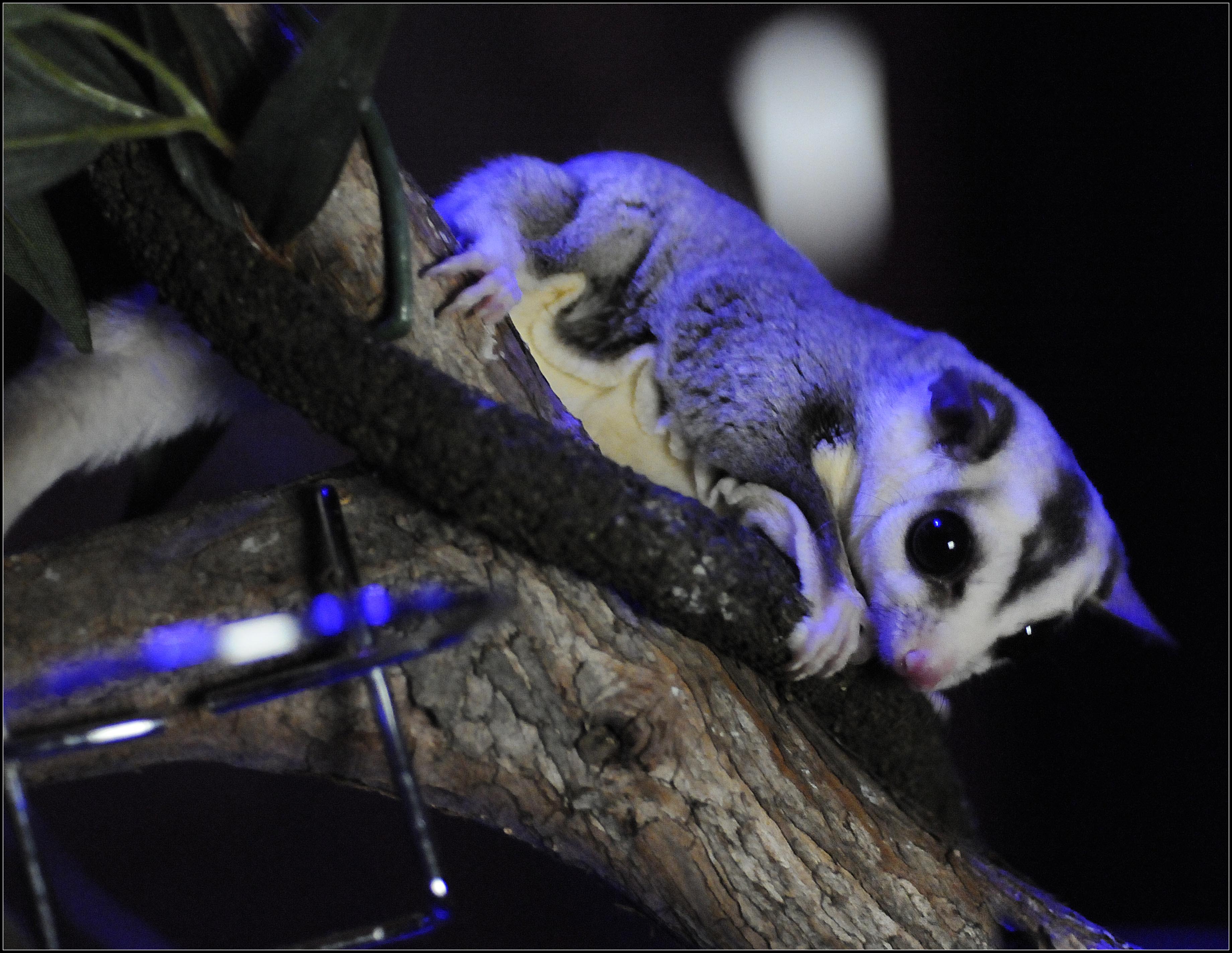I’ve been making the rounds of interesting New York City science events this week. Yesterday morning– along with a bunch of other journalists– I got a preview of the American Museum of Natural History‘s Extreme Mammals exhibition, which opens on Saturday, May 16.

Walking through the exhibit, it’s interesting to think about what we consider “normal” about mammals and how some of these examples, mostly fossils and model reconstructions, challenge that notion. The exhibit entrance is striking, a model of an ancient rhinoceros relative (Indricotherium), the largest-ever land mammal– so big that he’s the entry gate to the exhibit.

Next, of course, is the smallest– a model of a bumblebee bat– a little thumb size creature about the size of those little plastic animals that you sometimes see decorating the end of kids’ pencils or pens. Evolution may be random, but here it almost seems whimsical, like nature created a beautiful toy.
However, the cute centerpiece of the exhibits are live sugar gliders– little Australian marsupials that look a little like a cross between a squirrel and a bat– flaps of skin between their front and back legs serve as parachutes that allow them to glide.

It’s a fun exhibit with lots of interesting factoids about brain size, trunks, horns, and even scales– unexpected features on some unusual creatures. So, it’s worth a stop, and save time to watch the sugar gliders.

1 Comment
Comments are closed.